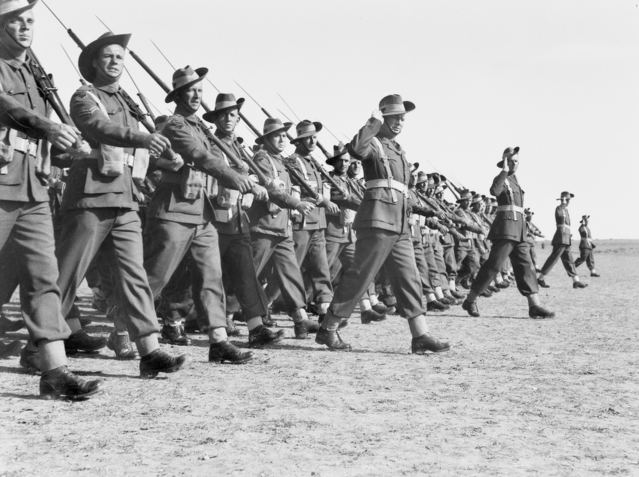 | ||
The structure of the Australian Army changed considerably during World War II. At the outbreak of war the Army comprised a small regular component and a large, but ill-trained and equipped, militia force. In September 1939 the government authorised the establishment of the Second Australian Imperial Force for overseas service; this force eventually reached a strength of four infantry divisions, an armoured division and various headquarters and support units. The militia force, which remained in Australia, was neglected until the outbreak of the Pacific War.
Contents
The militia units were fully activated in late 1941, and additional such formations were established in 1942. Despite the loss of the 8th Division in February 1942, the Army reached its peak strength of eleven infantry divisions and three armoured divisions later that year. This force was larger than what the Australian economy could support, however, and was gradually reduced in size. At the end of 1943 the Government determined that the Army's strength was to be six infantry divisions and two armoured brigades, though further reductions were ordered in August 1944 and June 1945. If the conflict had continued past August 1945, the size of the Army would have been further reduced to three divisions.
Following the end of the war the Australian Army was rapidly demobilized. However, the force formed for occupation duties in Australia became the nucleus of the permanent Australian Regular Army, and a large number of militia units continued to be maintained.
3 September 1939
On the outbreak of war, the Army comprised the following major units:
9 April 1942
The Army was restructured in 1942, with major units as follows:
15 August 1945
The structure of the Army's major combat units and commands at the end of the war was as follows:
